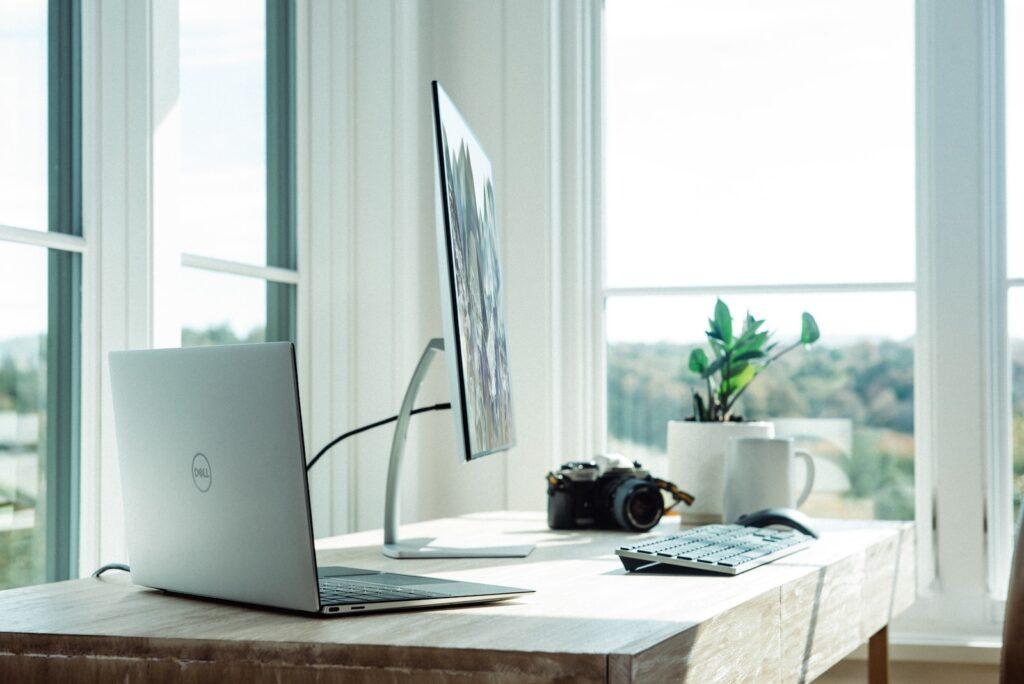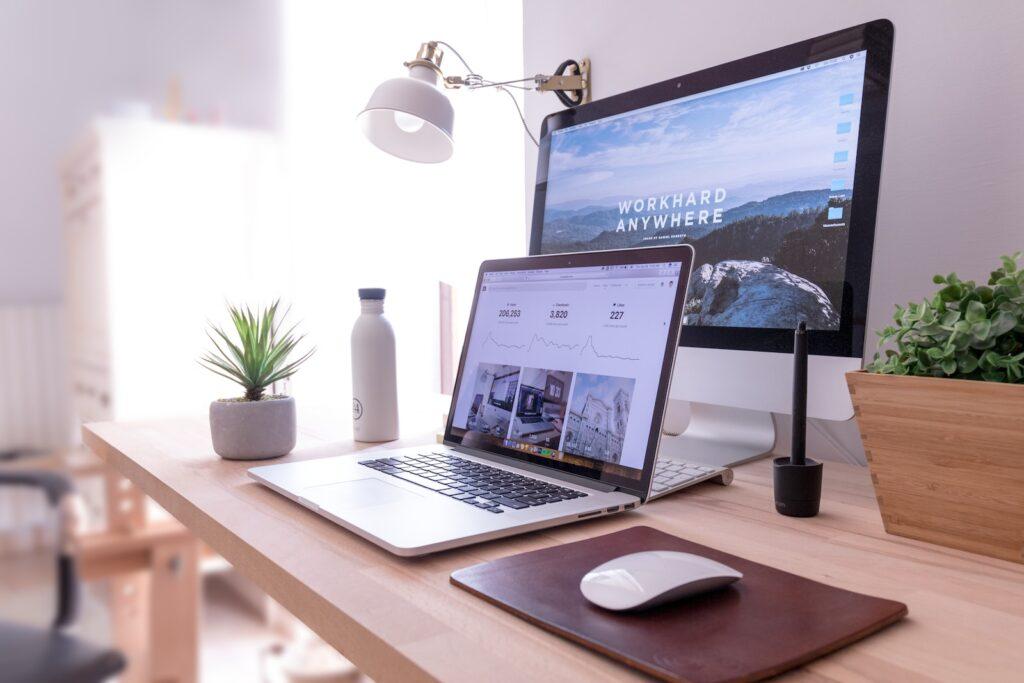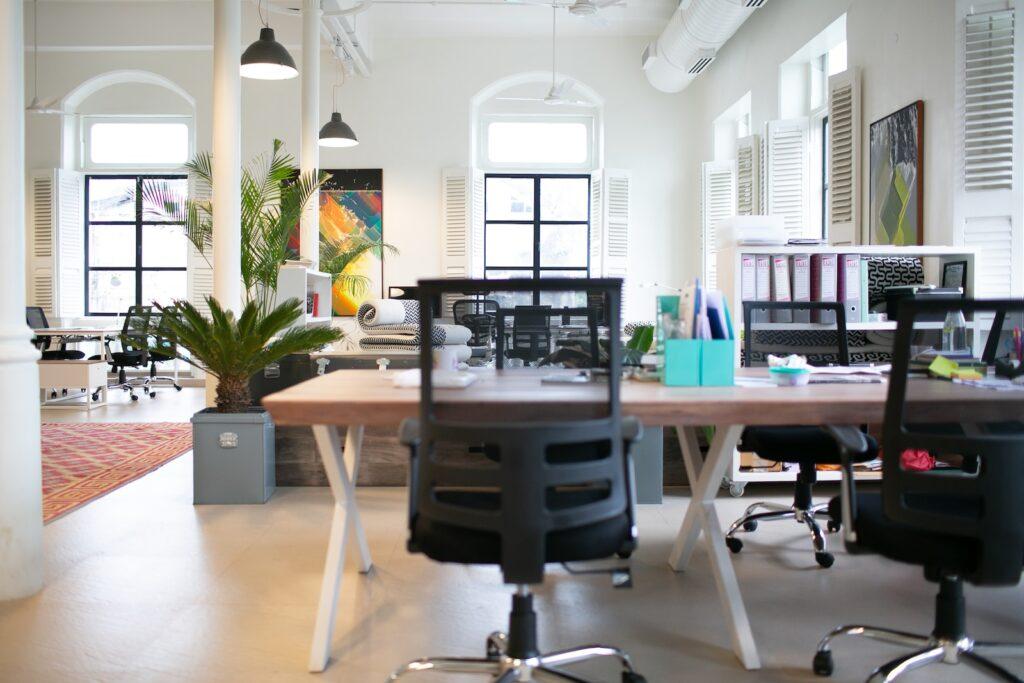Rated & Reviewed is reader-supported. When you buy through links on our site, we may earn an affiliate commission. Learn more.
In today’s rapidly changing work landscape, more and more individuals are transitioning to remote work and setting up their own home offices. Whether you’re converting an existing space or starting from scratch, a well-designed setup is essential for maximizing home office productivity and achieving work-life balance. In this comprehensive guide, we’ll provide you with expert tips and insights on how to create the ultimate home office setup that promotes efficiency and boosts your overall work performance.

The Importance of a Home Office Setup
Working from home offers numerous advantages, including increased flexibility and convenience. However, it can also present unique challenges, such as distractions and difficulty separating work life from personal life. That’s where a properly organized and optimized home office comes into play. By creating a dedicated workspace, you establish boundaries, minimize interruptions, and optimize your environment for maximum productivity.
Designing Your Home Office Space
Assess Your Available Space
Before diving into the specifics of your home office setup, it’s important to evaluate the available space. Whether you have an entire room, a small nook, or a shared area, understanding the limitations and possibilities will help you make informed decisions about furniture, layout, and storage solutions.
Prioritize Ergonomics
One of the key aspects of a productive home office setup is ergonomic design. Ergonomics focuses on creating a workspace that minimizes physical strain and discomfort, ultimately enhancing productivity and well-being. Consider the following ergonomic essentials:
- Home Office Desk: Choose a desk that suits your needs and fits the available space. Opt for a desk with adjustable height options if you prefer the flexibility of sitting and standing throughout the day.
- Ergonomic Chair: Invest in a comfortable, supportive chair that promotes good posture and reduces the risk of back pain or other musculoskeletal issues.
- Proper Lighting: Ensure your workspace is well-lit to prevent eye strain and fatigue. Utilize a combination of natural light, ambient lighting, and task lighting, such as desk lamps, to create an optimal lighting environment.
- Monitor Placement: Position your computer monitor at eye level to maintain a neutral posture and reduce strain on your neck and upper back. Consider using a monitor arm or stand to achieve the desired height and angle.
- Keyboard and Mouse: Choose an ergonomic keyboard and mouse that provide comfort and support for your hands and wrists, reducing the risk of repetitive strain injuries.
- Wrist Rests and Footrests: Utilize ergonomic accessories such as wrist rests and footrests to promote proper alignment and reduce strain during extended periods of typing or sitting.
Optimize Your Technology
In today’s digital age, technology plays a crucial role in remote work. Here are some technology-related tips to enhance your home office setup:
- Reliable Internet Connection: Ensure you have a stable and high-speed internet connection to support video conferencing, file sharing, and other online tasks without interruptions.
- Quality Audio and Video Equipment: Invest in a high-quality video conferencing camera and microphone to enhance your virtual meetings and communication with colleagues. Consider all-in-one devices like the Meeting Owl Pro, which provide a 360-degree camera, microphone, and speaker for seamless collaboration.
- Multiple Monitors: If your work requires multitasking or referencing multiple documents simultaneously, consider incorporating dual monitors or an ultrawide monitor into your setup. This allows for increased screen real estate and improved workflow efficiency.
- Cable Management: Keep your workspace organized and free from clutter by utilizing cable management solutions. Cable clips, cable sleeves, and desk grommets can help keep wires and cords neatly arranged and prevent them from becoming tripping hazards.
Create a Productive Atmosphere
The ambiance of your home office can significantly impact your focus and motivation. Consider the following elements to cultivate a productive atmosphere:
- Color Psychology: Choose colors that promote focus and concentration. Neutral tones like white, gray, or blue are known to have a calming effect, while pops of vibrant colors can add energy and creativity to your workspace.
- Natural Elements: Incorporate elements of nature, such as plants or natural materials, to create a soothing and refreshing environment. Not only do plants provide visual appeal, but they also contribute to improved air quality and overall well-being.
- Noise Management: Minimize distractions by implementing soundproofing measures, using noise-canceling headphones, or playing background music or white noise to mask unwanted sounds. Experiment to find the level of ambient noise that helps you maintain focus.
Essential Home Office Equipment and Accessories
To further optimize your home office setup, it’s important to consider the equipment and accessories that will support your work processes and enable seamless productivity. Here are some essential items to include:
- Home Office Desk: Choose a desk that suits your needs and provides ample workspace for your tasks. Consider factors such as size, material, storage options, and cable management features.
- Ergonomic Chair: Select a chair that offers proper lumbar support, adjustable features, and comfortable padding. Invest in a chair that encourages good posture and minimizes the risk of discomfort or strain.
- Lighting Solutions: Ensure your workspace is well-lit with a combination of natural and artificial lighting. Position desk lamps or floor lamps strategically to avoid glare and shadows, and use bulbs that mimic natural daylight for optimal visibility.
- Computer and Peripherals: Depending on your work requirements, choose a reliable computer or laptop that meets your performance needs. Additionally, consider investing in a high-resolution monitor, a keyboard and mouse suited to your preferences, and any other peripherals essential to your workflow.
- Organization and Storage Solutions: Keep your workspace tidy and organized by incorporating storage options such as shelves, drawers, or filing cabinets. Use desk organizers, file holders, or digital tools to manage documents, supplies, and other work-related materials.
- Collaboration Tools: Equip your home office with video conferencing software, noise-canceling headphones, and a high-quality microphone and webcam. These tools enable seamless communication and collaboration with colleagues and clients, regardless of your physical location.
- Accessories for Comfort and Well-being: Consider additional accessories such as a standing desk converter, a footrest, an ergonomic keyboard and mouse, a document holder, or a wrist rest to enhance your comfort and reduce the risk of strain or fatigue.
Small Space Home Office Setup Tips
For those with limited space, there are various strategies to create an efficient and functional home office setup. Follow these tips to make the most of your compact workspace:
- Wall-Mounted Desks: Install a wall-mounted desk that can be folded up when not in use. This space-saving solution allows you to reclaim floor space and create a versatile workstation.
- Convertible Furniture: Choose furniture pieces that serve dual purposes. For example, opt for a desk that doubles as a storage unit or a bookshelf that can be transformed into a standing desk.
- Vertical Storage: Maximize vertical space by utilizing wall-mounted shelves or overhead storage units. This frees up valuable floor space while providing ample storage for supplies, books, and files.
- Declutter and Simplify: Keep your small home office clutter-free by regularly decluttering and organizing your workspace. Minimize distractions by storing non-essential items out of sight and maintaining a minimalist aesthetic.
- Utilize Natural Light: Position your desk near a window or light source to make the most of natural light. Natural light not only enhances your mood but also creates an illusion of a more spacious environment.
Designing an Office with No Windows
Working in a windowless office space poses unique challenges, but with the right design choices, you can create a stimulating and well-lit environment. Consider the following tips for designing an office with no windows:
- Optimal Lighting Solutions: Invest in high-quality lighting fixtures that mimic natural light. Use full-spectrum light bulbs or LED panels with adjustable color temperature to create a bright and inviting atmosphere.
- Mirrors and Reflective Surfaces: Place mirrors strategically to reflect light and create a sense of openness. Mirrors can also give the illusion of windows and add visual interest to the space.
- Artificial Plants and Greenery: Incorporate artificial plants and greenery to bring a touch of nature to your windowless office. These elements not only improve the aesthetics but also contribute to a more vibrant and uplifting atmosphere.
- Wall Murals or Wallpaper: Choose wall coverings that feature outdoor scenes, landscapes, or natural motifs. These visually appealing designs can create a sense of depth and provide a calming backdrop.
- Artificial Lighting Control: Install dimmers or smart lighting systems that allow you to adjust the brightness and color temperature according to your preferences. This flexibility allows you to create different moods and adapt to various tasks throughout the day.
FAQs on Home Office Productivity
- Does work from home increase productivity?
Working from home can increase productivity for some individuals. Eliminating the commute, reducing office distractions, and having a more flexible work environment can lead to improved focus and efficiency. However, it depends on various factors such as individual work style, access to necessary resources, and the ability to establish a productive routine. - How do I optimize my home office?
To optimize your home office, consider factors like lighting, ergonomic furniture, and a dedicated workspace. Choose appropriate lighting that is not too harsh or dim. Invest in a comfortable chair and set up a proper desk arrangement that promotes good posture. Ensure you have the necessary technology and equipment for your work tasks. - How can I make my home office more productive and healthier?
You can make your home office more productive and healthier by implementing strategies such as taking regular breaks, maintaining a clean and organized workspace, incorporating natural elements like plants, ensuring proper lighting and ventilation, and promoting a healthy work-life balance. - How can I increase positive energy in my office?
To increase positive energy in your office, you can introduce elements like natural light, plants, artwork, and personal touches that inspire you. Keeping your workspace organized, using uplifting colors, and playing background music can also contribute to a positive and energizing environment. - What are 4 simple adjustments you can make to your workspace to improve your health and productivity at home?
Four simple adjustments you can make to your workspace for improved health and productivity include:
- Setting up an ergonomic chair and desk to support good posture.
- Positioning your monitor at eye level to reduce strain on the neck and eyes.
- Using proper lighting to minimize eye fatigue and improve visibility.
- Keeping essential items within reach to minimize unnecessary movements and distractions.
These FAQs provide insights into common questions related to home office productivity and offer guidance on optimizing your workspace for improved focus, health, and efficiency.
Conclusion
Creating an optimal home office setup is crucial for remote workers seeking enhanced productivity and work-life balance. By carefully considering your space, prioritizing ergonomics, optimizing technology, and incorporating essential equipment and accessories, you can design a workspace that promotes focus, efficiency, and overall well-being. Whether you have a dedicated room or a small corner, follow these tips and unleash your full potential in the comfort of your own home.
Remember, your home office setup should be personalized to suit your unique needs and preferences. Continuously assess and refine your setup to ensure it aligns with your evolving work requirements and promotes a positive and productive work environment. Now, it’s time to embark on your home office transformation journey and unlock your full productivity potential!
Amazon and the Amazon logo are trademarks of Amazon.com, Inc, or its affiliates.


